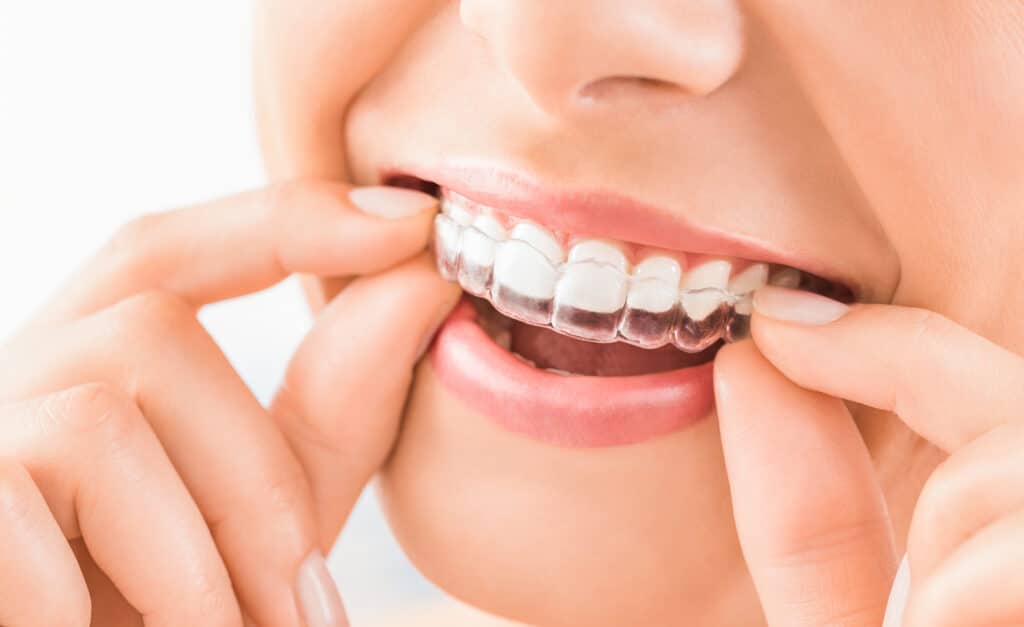Invisalign Basics

If you could choose, would you wear braces or clear aligners on your teeth?
If clear aligners are your answer, you’re not alone. Over the past two decades, the use of clear aligners to correct tooth alignment has become increasingly common.
In this piece, we’ll examine Invisalign in greater detail to determine its efficacy in correcting teeth alignment issues and to weigh its benefits and drawbacks.
What exactly is Invisalign?
Invisalign is a brand name for a type of clear, thin aligner that is used to straighten teeth. The aligner’s SmartTrack material is a flexible thermoplastic.
According to the American Association of Orthodontists, this device makes orthodontic treatment “less conspicuous.”
Invisalign aligners aren’t fully invisible, but they’re less obvious than traditional braces’ brackets and wires.
What kinds of problems with teeth can Invisalign fix?
Several orthodontic difficulties, including mild to moderate crowding, spacing, and bite problems, can all be addressed with Invisalign.
Invisalign can treat the following dental disorders, according to its website:
- some overbite, underbite, and crossbite problems
- open bite
- gap teeth
- overcrowding
What is the significance of wearing them?
The first step is to see an orthodontist, who will make a 3-D image of your mouth and jaw. They will utilize this image to devise a plan for shifting your teeth into the correct position.
Then, based on this plan, your orthodontist will fabricate a series of personalized plastic aligners. These aligners will put pressure on your teeth, which will slowly move them into the right positions.
Depending on your orthodontist’s recommendations, you’ll replace one set of aligners with a new set every week or two. You’ll typically need to wear the aligners for 20 to 22 hours per day.
Aligners should be taken out only when the following conditions are met:
- food or drink
- hygiene routines like brushing and flossing
- Purifying your Invisaligns
If you want to keep your aligners in good shape, you need to be cautious when cleaning them. If you use very hot water, the plastic could become warped. This can change how the aligners fit, slow down your progress, and make the aligners less effective.
Your orthodontic difficulties’ complexity may also influence how well Invisalign works for you. If your spacing or bite problems are more complicated, it may take longer for this treatment to work.
So, what are the benefits?
Examining the benefits of Invisalign might help you decide if it’s the appropriate course of action for you.
The benefits of Invisalign
The aesthetic component. This is a frequently touted reason for using Invisalign. These clear aligners are less obvious than braces.
You can take them away. In the event that it is necessary, the aligner can be physically extracted from your mouth.
Efficiency in dental hygiene. By removing the aligner, you may effortlessly brush and floss your teeth.
Fewer possible issues to worry about. Many patients with traditional braces had broken brackets or wires that required an emergency visit to the orthodontist. Instead of worrying about that issue, you can just use clear aligners.
